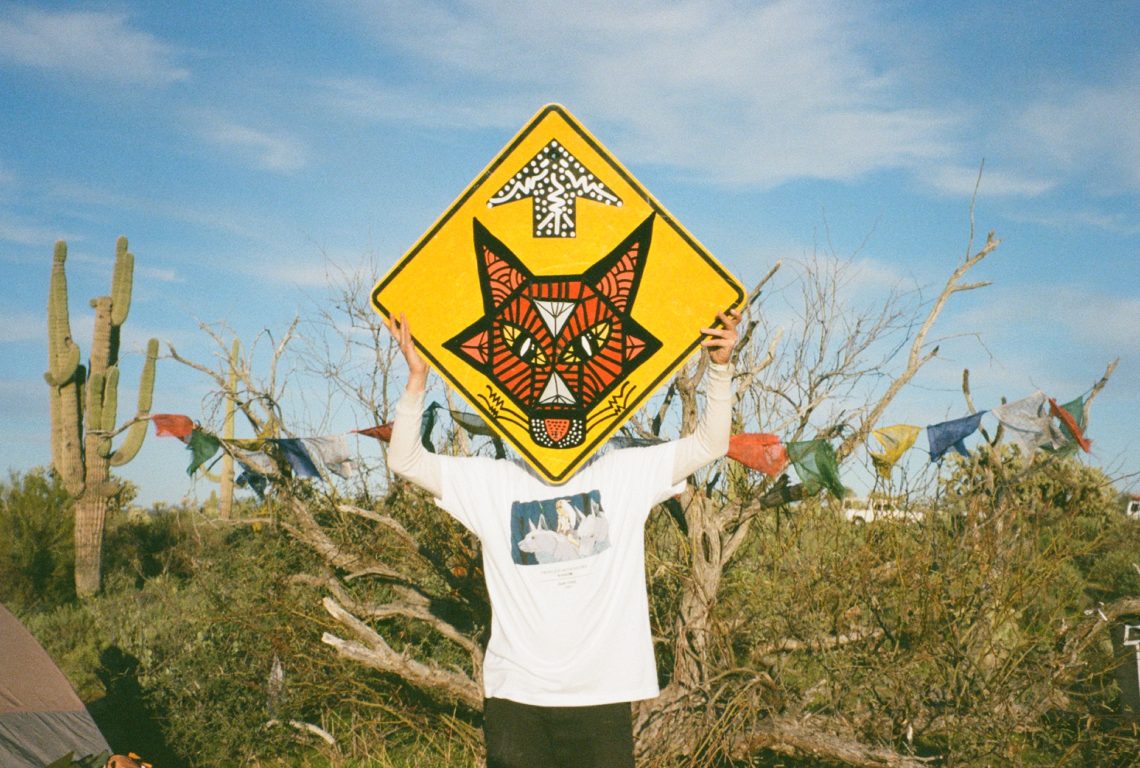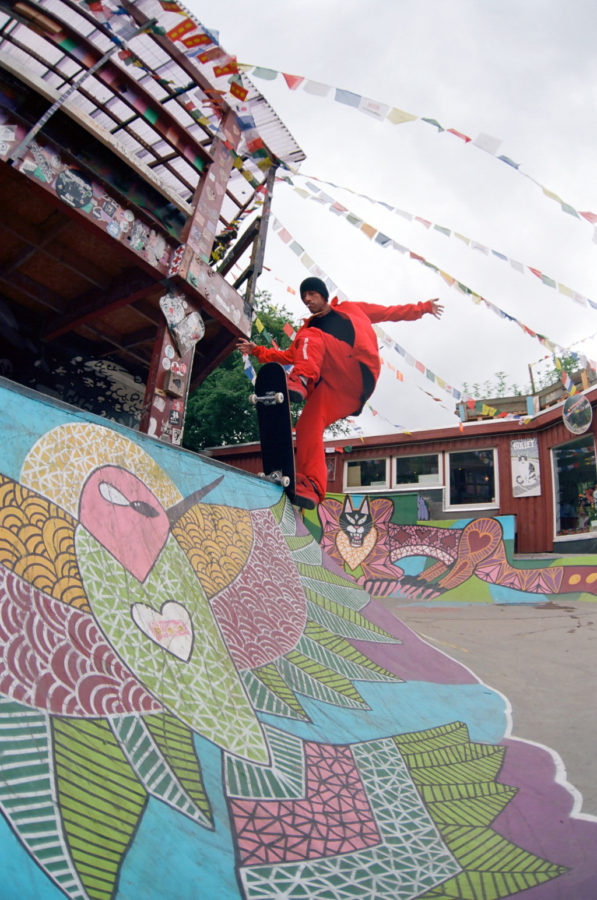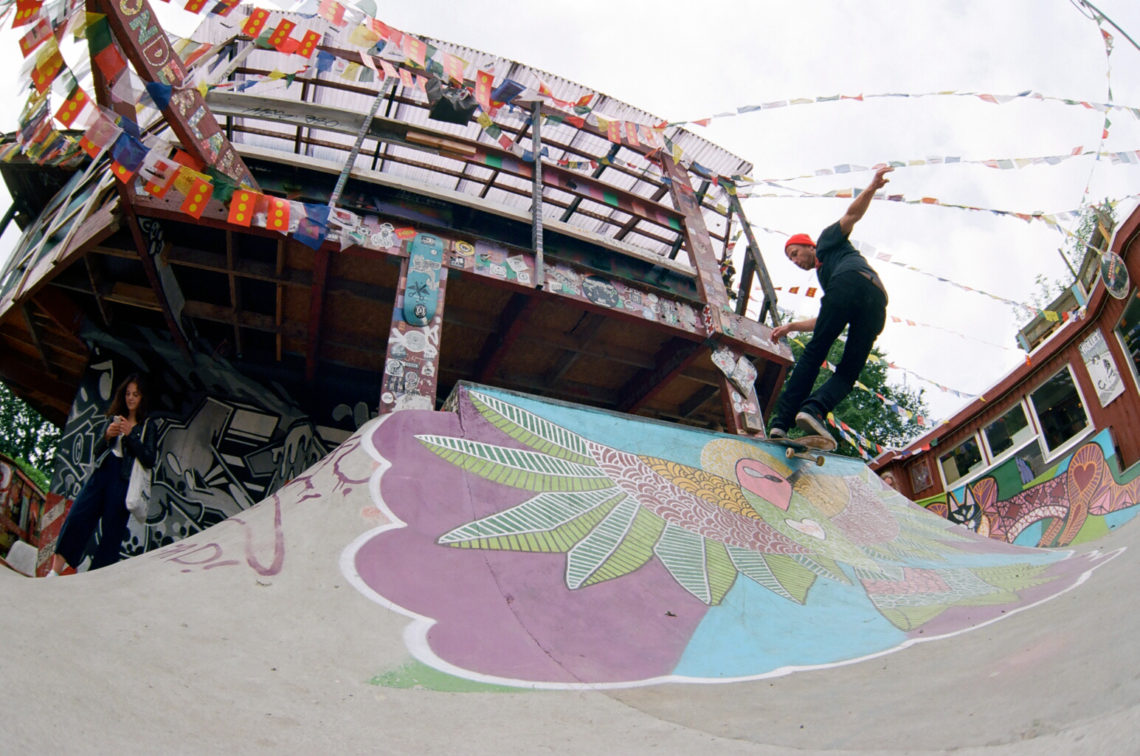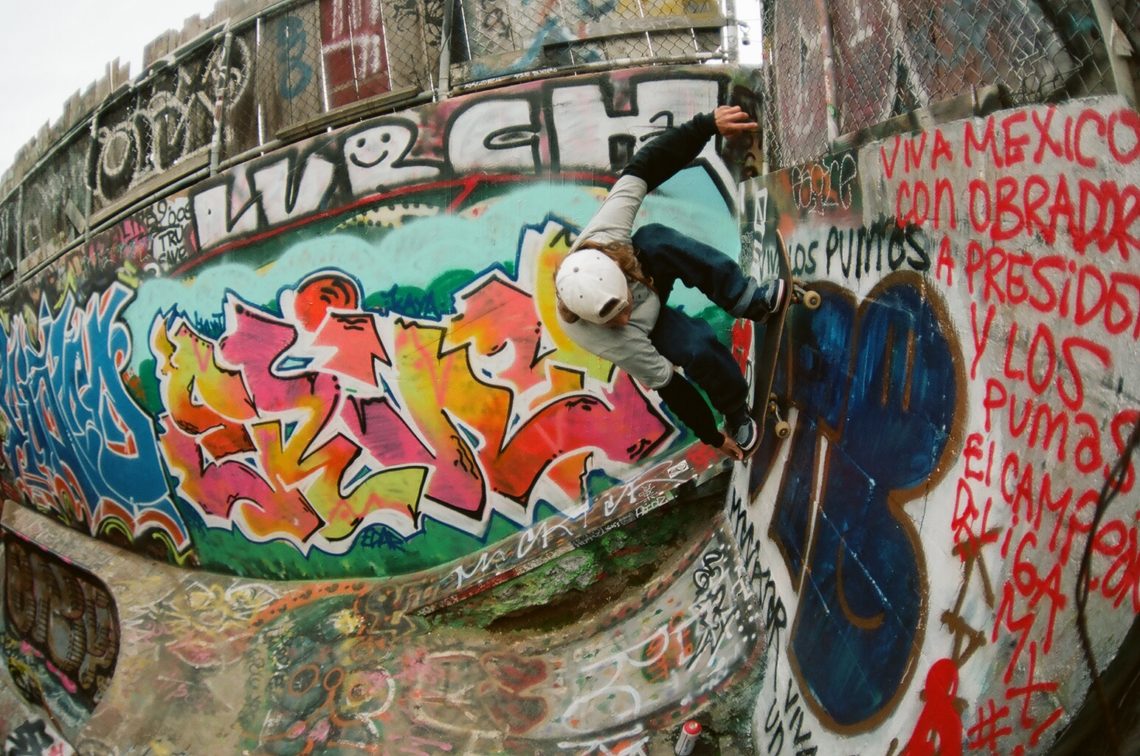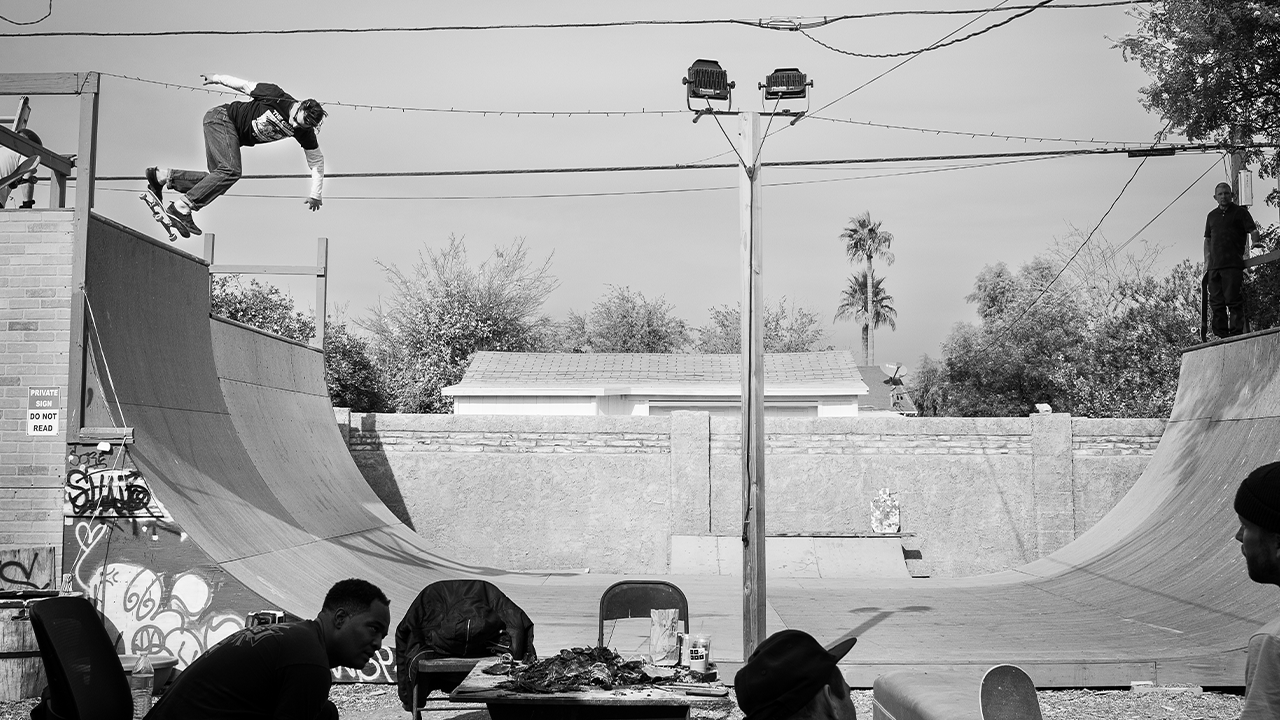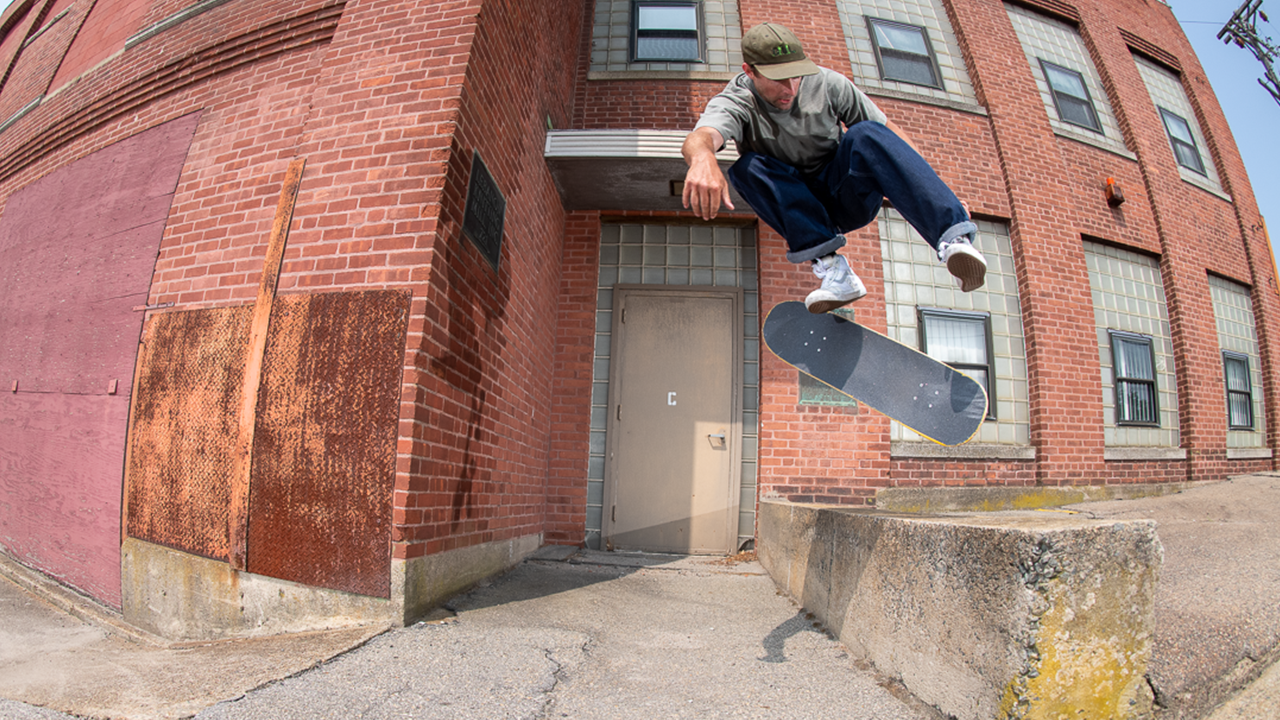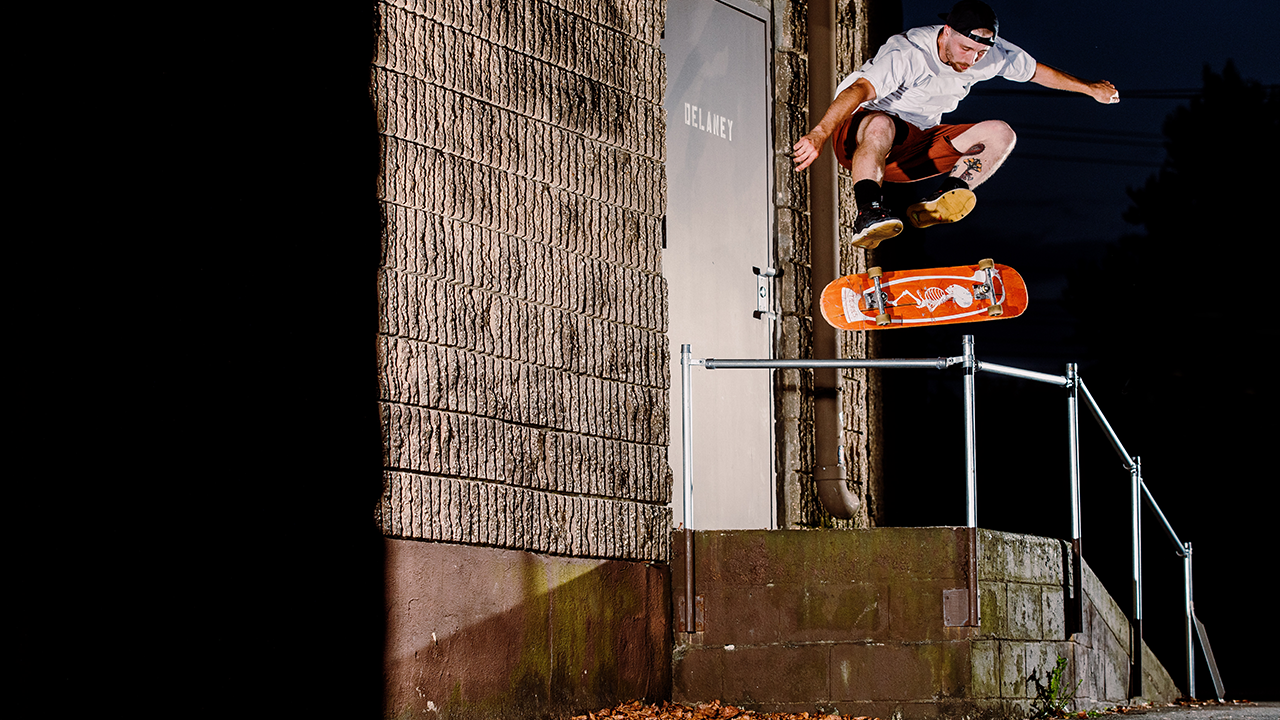Interview by Larry Davis.
Hey Mike, what are you up to?
I’m currently the artist-in-residence at Montecito Sequoia Lodge up at 7,000 feet in Kings Canyon National Park in California. I’m teaching art workshops during the day to people of all ages.
Where are you from originally?
I grew up in Irvine, California. It was close enough to Huntington Beach that I was fortunate enough to witness the daily sessions of Ed Templeton, Tom Penny, Geoff Rowley at the original tiny HB Park and really absorb all the little details of the culture. I was in awe of Ed and how he skated, did art, shot photos, and guided himself with a moral compass.
Were you already making art at this point, or would you say skating got you into it?
Skateboarding one hundred percent inspired me to think art was cool, dynamic, and relevant, instead of just another class in school like math or social studies. I was really inspired by all the nonconformist graphics of the ’90s like Mark McKee, Sean Cliver, Neil Blender, and Kevin Ancell. The walls of the skate shops in that era were like a lowbrow Louvre to me, shocking and wonderful.
Is there anything you’re trying to capture by painting on something and then shooting film of someone skating on it? Is there some deep artistic explanation for it or are you just a skater with paint and a camera having a good time?
Those shots that combine my murals and skateboarding are the full expression of my journey as an artist and as a skateboarder. It might sound corny but these shots mean the most to me. They document putting in the work with spray cans to paint a ramp at a park or DIY quickly and confidently with something that I believe beautifies and adds to the atmosphere, then having the communication skills and relationships to ask a ripper like Evan Smith or Tom Penny to blast on it while bringing it full circle with the fisheye and film camera. Then leaving hoping the moment has been captured properly and the film will print well. These moments combine my passion for painting, photography, and friendship, and sometimes the results are magical.
Speaking of magical, try to tell me about Evan Smith in five words or less.
Draws water from deep wells.
What’s the craziest place you’ve been with Evan? In any dimension.
I am so grateful for my friendship with Evan. A memory that sticks out with Evan was on a Skate Wild trip to the Lakota Nation. The van had broken down, so like a Pee Wee Herman movie we convinced a guy named Toof to loan us the front of a Big Rig truck to get to Pine Ridge. There was a thunderstorm and Toof’s truck ended up getting stuck in the Prairie so we had a few days to wander the ancient hills while we waited, literally for the earth to harden so the vehicle could move. We were sitting in a misty drizzle and Evan wrote a song based on a story our host Tilda told us. He ended up performing the song in the ballroom at The Harvey Milk Photo Center at a Skateboard show called Shutter Speed I produced there. These types of interconnections and far out stories are deeply woven into Evan’s fabric. So when he is on stage and says, “This is a song I wrote when we were stranded in The Black Hills of the Lakota Nation for a few days in a thunderstorm…” he is not spitting fairy dust or spinning a yarn, he is speaking the truth. There are countless stories like this from the road and the desert.
It seems like you’re big on connection making in both the art and skate worlds. Any advice you can give to artists tryinf to expand their horizons and network with their communities?
I think it is helpful to be articulate, direct, kind, and engaging. Many artists for whatever reason can be aloof, unresponsive, or avoid eye contact. Awkward human interactions, whether a slippery fish handshake, or mumbled introduction, can st a tone of mistrust and unprofessionalism. I would also encourage aspiring artists to rise to the challenges and risks that exist in this world.
Can you tell me how the Growlery came about, what you did there?
Jean Chadbourne was interested in starting an artist residency in the city and I had experience with residencies in Paris, Vienna, Copenhagen, and Illinois. Our partnership was actually formed here in the Sequoia Mountains. She gave me a two-year term, like a Senator, to launch, curate, and manage her newly refurbished Victorian in the Haight. I am proud of the skate and graffiti culture shows we did in that period. I tried my best to keep the doors open and create a welcoming safe space fr artists, skateboarders, and the community in general. Having a relatively “open house” in SF was very powerful and I would love to work more along those lines in the future.
Is SF still the place to be? How has the scene changed over the time you were there?
In my opinion SF will always be the crown jewel of the American skateboard scene. Besides the obvious Thrasher and DLX cultural influences, the skate photographs and footage of the city have a soulful historical quality that cannot be duplicated. The next generation of skaters are always reinventing or reinvigorating the scene whether it is EMB, Pier 7, The DMV curbs, Fort Miley, Potrero, The Avenues, and every nook and cranny. Each generation leaves their mark. People like PSplifff, Phil Shao, and Jake Phelps are Biblical figures in the testament of SF skateboarding. I think the influence of the filmmaking of Ryan Garshell annot be denied in terms of documenting the potential fun to be had in San Francisco. Stinks the rent is so high.
Are you close with the Alis homies in Copenhagen? When did you paint in the bowl and skate with them?
When staying at the residency in Copenhagen I biked down to Christiania. It turned out that the Alis crew and I had many friends in common. Tom was living in Copenhagen at the time, so it was a full circle experience from spending so many afternoons in awe of him of him at Huntington Beach Park and TSA demos as a grom. We skated, painted, and even shot skate photos of each other. Tom laid down on the ground in his fresh red tracksuit to shoot me doing a little frontside rock. It was his idea! I was blown away. I really respect the whole international DIY scene Alis supports. Of all the skate brands I admire, I feel the most natural representing their hoodies. People are always saying how much they love those guys! Nothing but good vibes. I feel they represent the skateboard spirit of wanderlust, community, diy, and sharing so well.
You’ve spent a lot of time in Europe, ever thought about just staying out there?
I really love going to Europe for months on end, but it always feels good to come home. America is very imperfect but I love my parents, friends, and rabbit that are here. I do feel deeply connected to North American wilderness and its plants and animals. I love surfing at San Onofre and skating SF. I would like to contribute to American culture and help in some way in healing our deep divides. Sometimes I feel proud to be an American when I think of our cultural contributions such as hip hop, graffiti, and skateboarding, but I also feel shame with our legacy of brutality, in particular with Indigenous Peoples and slavery. We also have a huge sickness with mass shootings and religion as political justification for nearly everything, but I don’t know what the cure is.
I wish you luck in finding it. What’s next for you? Anything coming up you’d like to promote?
I have been self-publishing my own small line of Huskyroundup pins and things based on a love of art, skateboarding, and travel. Thank you to my friends for appearing in the ads. I’ve also been shooting film for the Japanese Skate Magazine called SB Journal thanks to Senichiro Ozawa and Akiko Mihara for that. I hope to have an exhibition with them in Tokyo and Osaka when travel resumes on a larger scale. Grant Taylor also blessed me with a collaboration I am super honored to have done which should be in skate shops around the time this Skate Jawn drops. Thank you for taking the time to read this. All good medicine.

